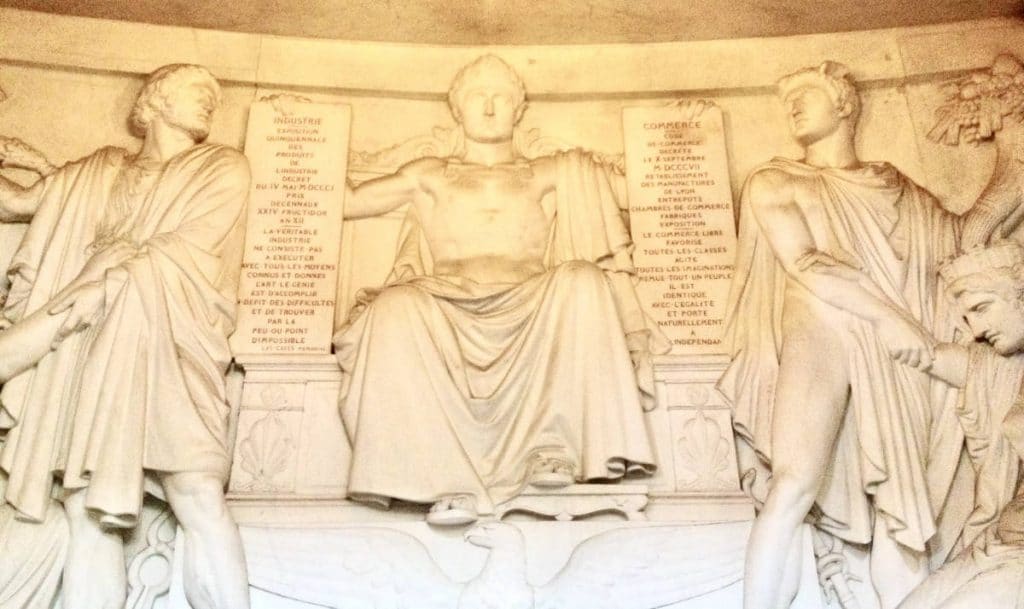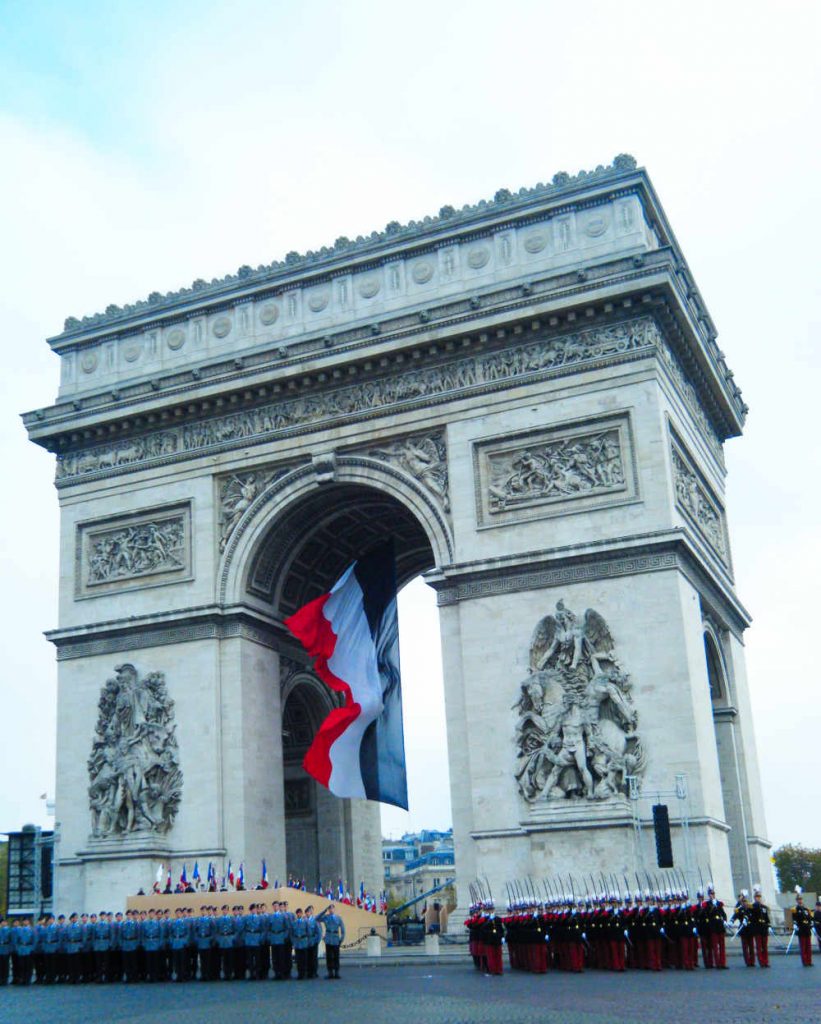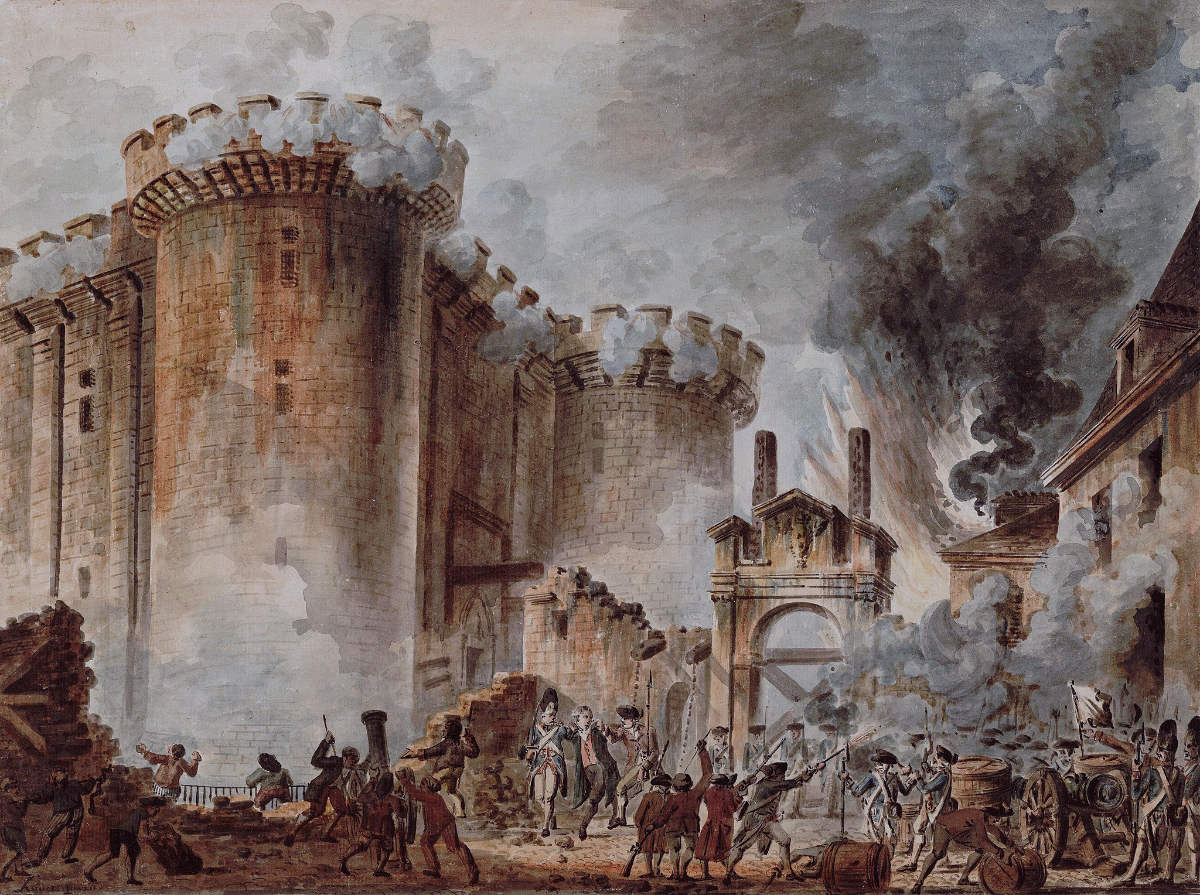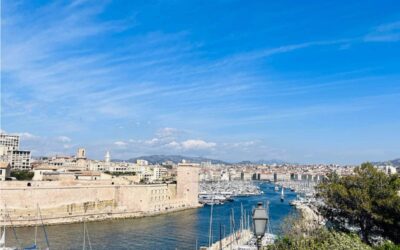Growing up in Canada, we had “snow days”, when so much snow had fallen the snowplows couldn’t get to it on time. For my kids, on the other hand, it is “Strike day” in France.
It is going to be an extended series of protests in France, with an expectation of large general strikes in Paris. Depending on the sources you read in social media or the news, it is either going to be the Apocalypse or Y2K all over again. (If you don’t remember Y2K, just carry on!)
My little French revolutionaries will not be marching on the street, protesting against their mum’s TV restrictions. (Though they would if someone gave them the idea.)
But they do have a day off from school. Their nursery and preschool teachers are on protesting, along with a large proportion of other public workers striking across France.
So let’s have a look at why the French are so fond of going on strike, shall we? Allons-y!
Do French People strike more than other countries?
I would be remiss if I had a blog about living in France, and not include the protests. If you read the headlines around the world, you might be under the impression that people are “always” on strike in France. It is the part of life in Paris that is generally ignored by all those gushing Instagram photos.

So do French people strike more than other countries? The European Trade Union Institute cheerfully points out that yes, in Europe, France is the champion of protests in Europe with over 125+ days labor is lost to strike action.
But other countries’ fight for workers’ rights too, depending on the period we look at. In certain years, Greece led the way, other times Spain, etc. There are various strikes in Canada as well, but those never make international headlines, mostly because the photos don’t show anything dramatic.
☞ READ MORE: 250+ France Fun Facts: By the Numbers
It is not merely that French people are on strike. It is that for some reason or another, the protests sometimes turn violent. I’d venture to say that it is those photos that give the impression that French people are “always protesting”.
The French easily remember the international headlines of the Air France HR chief having his shirt ripped off by Air France workers during a union dispute. Or what looked like scenes from a war on the Champs Elysées in March 2019 (link in French) during a Gilet Jaune (yellow vest) strike.
La France est un paradis peuplé de gens qui se croient en enfer.
Sylvain Tesson, French writer
Translation: France is a paradise filled with people who think they are in hell.
It is the violence and the chaos that draws attention. Most people thinking of visiting Paris would not be concerned if it was just peaceful protestors marching up and down Paris’s Champs Elysées. It is the photos flashed around the world of the substantial police presence, the street closures and violent clashes that have the real impact.
And lost in all this are the demands of the people protesting, who are legitimately looking for a better future for themselves and their families.
☞ READ MORE: Why the French National Anthem lyrics are so controversial
Through the eyes of Outsiders
It is too easy as a foreigner to look at these incidents in horror and awe, and rush to judgment. And after these sorts of violent protests, it is even more astonishing to consider that hardly any of those perpetrators will be arrested and prosecuted.
There’s a gallic shrug of the shoulders, along with a sigh that a few bad apples were to be expected. The protests against the government will continue.
For people from Anglo-Saxon countries, the French violent protests are shocking stuff. The Canadian motto is “Peace, Order, and Good Government“. An optimistic sentiment, like every Miss Universe contestant hoping for “world peace and happiness”.
And as a Canadian, we’ve happily been quite lucky. (We also have the benefit of having a monarch who is usually nice, and even better, lives really far away.)
I can’t remember the last large general strike for workers’ rights that took place in the U.S., Canada, or the UK. (Although, I’m sure someone will comment to remind me!) Any big changes to the law and our way of life, in the rest of the Western world, we tend to wait it out for the next election. French people are not that patient.
But while as a foreigner, it can be easy to harshly judge the French propensity to strike, it is equally easy to look on in envy at the safety net of French workers enjoy. And their 6-10 weeks vacation. Those two points go hand in hand, since those French benefits were hard fought for.
☞ READ MORE: Do French People only work 35 hours a week?

So the current protests are because the President of the French Republique has proposed a new retirement law, but indeed it could have been any new law. Last year, the protests were about a tax on diesel. Just because the French President was elected doesn’t mean he gets to propose new laws without pushback.
To understand the French public’s willingness to protest and tolerate a bit of property destruction, we need to put on our amateur psychology hats and take a look at French history.
☞ READ MORE: “Vive La France” and other French Presidential Vocabulary

History of Workers’ Rights
i) the Construction of Château de Versailles
Every year millions of tourists make their way to the Château de Versailles and awe at its splendour. But did you know that thousands of workers died to build that palace?
It was the 1670s and there were no regulations on workers’ safety and rights. The Sun King Louis XIV (14th) had grandiose plans to build Versailles, and workers were expendable.
When one mother asked for the body of her worker son to be returned to her, Louis XIV promptly put her in jail for having the temerity to approach him. Louis XIV had an iron grip on his peasants, but his successors could not continue to be so cavalier.
ii) the French Revolution
It was 1789 and there was still no such thing as “workers’ rights”. But this time, France was broke. Louis XVI (16th), the husband of Marie-Antoinette had expended a lot of money helping the American Revolutionaries fight their mutual arch-enemy, the British.
But the French workers were starving and not interested in a war overseas. They were being asked to pay yet another tax. (Plus, they imagined that it was going to fund another one of Marie-Antoinette’s dresses.)
And so here is where it gets interesting: the French People protested. Violently. Palaces were ransacked and prisons like the Bastille destroyed. The elite lords were put to the chopping block, and old institutions were overthrown.
In essence, things changed radically. The violent protests, mob rule, and brutal beheadings had brought about an enormous change in ordinary people’s lives.
In a short period of time, France had changed fundamentally. Elections were held for the first time, and new leaders came to power. The impossible had become possible, with the power of “the people”.
Liberté, Egalité, Fraternité
French Motto orignating in the time of the French Revolution
☞ RELATED POST: French Revolutionary Calendar: When France tried to change time
iii) Robespierre and the Reign of Terror
History, of course, can never be that simple. The years after the initial French Revolution are known as the Reign of Terror. It was a violent period of time when it was not only the elites who were beheaded. The different groups of revolutionaries themselves did not all agree with each other, and denouncements, assassinations, and the guillotine became common.
The elected class had become the new elite. One of the leaders of the revolution, a lawyer named Maximilien Robespierre, had a vision of the “ideal Republique”. Since the people he was trying to lead did not agree, he himself was put on trial, found guilty, and beheaded. The idea that a mere election by the people meant that he had the authority to propose strict new laws, was not enough to save him.
☞ RELATED POST: Why the French National Anthem remains so controversial
iv) Napoleon: the Code Civil and the Conseil de Prud’hommes
Soon after, another man stepped into the spotlight: Napoleon Bonaparte. With better instincts than Robespierre, he was “elected” Emperor of the French. Not a “President”, who could be voted out of office, or even a mere King, but an Emperor planned to leave the throne to his son.
But if you visit the Tomb of Napoleon at Les Invalides in Paris, you will see that it was not just his Empire and conquering armies that he was the proudest of.
It was under Napoleon that France got the Code Civil (also known as the Code Napoleon) that guaranteed personal liberties, the equality of citizens before the law and the secularity of the Church.
It wasn’t perfect, women were still considered property, but it established certain basic rights, including the right to work, where a feudal system existed before.

Under Napoleon, workers did not have the right to strike. But he did establish a system of labor courts known as the Conseil de Prud’hommes. Smaller labor courts had existed in Paris before in certain industries, but under Napoleon, this became nationwide.
The Prud’hommes exists in France to this day. Disputes between employer and employee can be taken to Prud’hommes a council of experts will assess the situation, and advise any penalties and reconciliation necessary.
Napoleon carried the idea of merit and fairness into his armies as well. Where before promotions were only given to nobility, under Napoleon’s army hard work and bravery were rewarded. This idea of merit, instead of nepotism, is what we expect today.
Napoleon, however, was not kicked out of office by the French, but the British. The French Monarchy was restored, with a great-nephew of Louis XVI and Marie-Antoinette. One thing was certain though, the era of the absolute monarchs was over.

v) 1864 and the Right to Strike
You might be surprised that between the late 1800s and the early 1900s, it was actually the United States that was the leader in violet workers’ protests (quote from Noam Chomsky).
It was in this same period, 1871, under the 3eme République that people in France officially got the right to strike. This actually reduced the number of violent protests in France, as the French authorities could not legally stop legitimate demands for better conditions.
vi) World War II and the French Resistance
The tug-of-war between Government authorities and workers’ rights continued throughout the 20th century. But it is during World War II that we see another example of violence against government actions having a dramatic effect on the course of French history.
This time it wasn’t a protest for workers’ rights, but human rights. While everywhere else we optimistically hope for “Good Government”, in France they already knew they had a bad one.
The man leading the French Government at the time was a celebrated war hero. Maréchal Philippe Pétain was the Commander-in-Chief who had led the troops during World War I and earned the respect of the French people.

But by the time World War II rolled around, he was a tired old man. And he was not keen to fight another Great War. He was appointed to Government by the Prime Minister of France in June 1940 and promptly conceded to Hitler. And so began Pétain’s Vichy Government collaboration with the German Reich.
France had been invaded and the horrors of occupation had begun. Out of this despair, the French Resistance was born. Ordinary French people organized themselves and became extraordinary in the process. Government workers, school teachers, secretaries, everyone and anyone who was willing and capable, conducted covert operations against those in power.
The sabotage of public property, economic resistance, and full out gorilla warfare was carried out by the French Resistance within France. It would all prove to be necessary to help the Allies win the war and help France be free again.
The idea of “Good Government” and that we should wait out an unpopular “law”, was proven untrue at least here in France.
vii) General Charles de Gaulle and the 1968 Strikes
To prove that the French people were never again going to blindly follow anyone, even Charles de Gaulle had his issues. The de facto leader of the French Resistance, General de Gaulle was hailed as a hero during the liberation of Paris in 1944.
This didn’t help him in 1968 however when the country came to a standstill. Large protests were taking place against the proliferation of capitalism, consumerism, imperialism and all the other ‘isms that you can think of.
The students went on strike and then workers joined them. Estimates said approximately 22% of the country had joined the protests. With wildcat strikes and forceful confrontations, the government feared a violent civil war.
The end result was the Grenelle agreements: a 35% increase in the minimum wage and a 10% increase in average real wages. De Gaulle also conceded to call new elections. The protests had paid off and the pattern was set.
With this much success, can you blame French citizens for preciously guarding their right to strike?
The Inspiration Effect
An important point to realize is that the events in France don’t take place in a vacuum. Even without social media, France’s Code Civil was quite influential when other countries, such as Italy, (Lower) Canada, Belgium, the State of Louisiana, etc were drafting their own laws.
Across Europe it is not just France where workers have strong employment rights and more than 4 weeks vacation. As a founding member of the E.U., the French standard of employment rights carries through.
In a connected world, countries’ laws influence each other, as citizens from other countries ask why they also can’t have a 35-hour workweek, and 8 weeks’ holiday.
Sounds crazy? It sounded crazy in the early 20th century as well, when the 5-day workweek became standard in Europe and North America.
Is it safe to visit during the protests?
So with all that footage of violent protestors in France, you’re probably wondering if it is safe to be in Paris. I always feel terribly sorry for the people living nearby and those small businesses and petites mains whose livelihoods have been interrupted. Insurance should cover the property damage, but the emotional impact is something else.
If you are visiting as a Paris though, keep in mind that like most things, it generally looks worse on TV than it is in person. The camera zooms in, while the police are busy keeping the tourists away.
In terms of figures, it is hard to quantify how many French people actually go on strike. One of the funniest things that occur during every protest is the dueling figures of how many people were actually present.
The matter is political where the Police say one figure (eg 100,000), and the unions promptly multiply that figure by three (i.e. 300,000). The actual figure of people marching is, I presume, somewhere in between? The percentage of violent troublemakers though will be much much smaller.
As a bystander, a bit of common sense goes a long way. Most strikes are announced in advance, so that people have time to prepare. Just like a snow day, if you can stay at home (or the spa) and relax with your loved ones, do so.
The part I find the scariest is not the actual strike itself (because generally, you won’t be able to get close), but being blocked in the metro or RER train station. With a crush of other people not moving, the slightest panic could set off a stampede. My advice would be to avoid rush hour train travel if you can.
One of the best places to check for up to date information is the Metro RATP website. The RATP updates what metro lines are closed due to protests, which is a good indication of areas to avoid.
If you are visiting Paris during a strike, have a look at the museum and monument closures online before making plans. If you insist on shopping on the Champs Elysées, well the roads will blocked off by the police, and you probably won’t get very far.
And like most things, you have to look at the humoristic side of things. Three-hour commute packed in a metro like a sardine? Hilarious. Gas shortages for your car? Downright comical.
But if it pays off with a new law declaring an extra week of holidays though, will it be worth it?
☞ READ MORE: Living in Paris: the Good, the Bad & the Ugly

If you enjoyed that article, you may want to read more about all the benefits that French people fought for and enjoy. Stay safe and à bientôt!
¹ Featured Image: Prise de la Bastille – Courtesy Wikipedia




